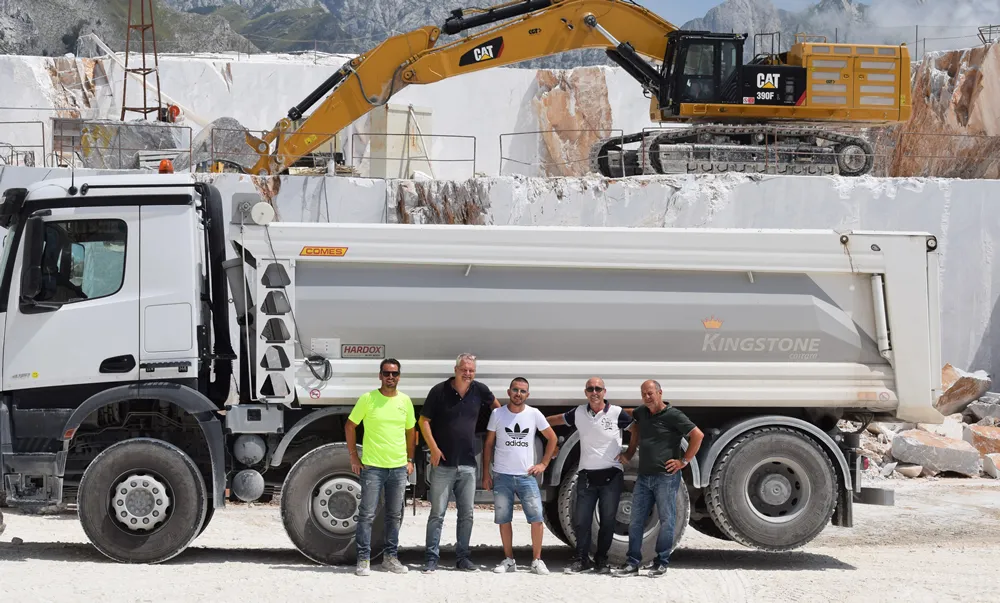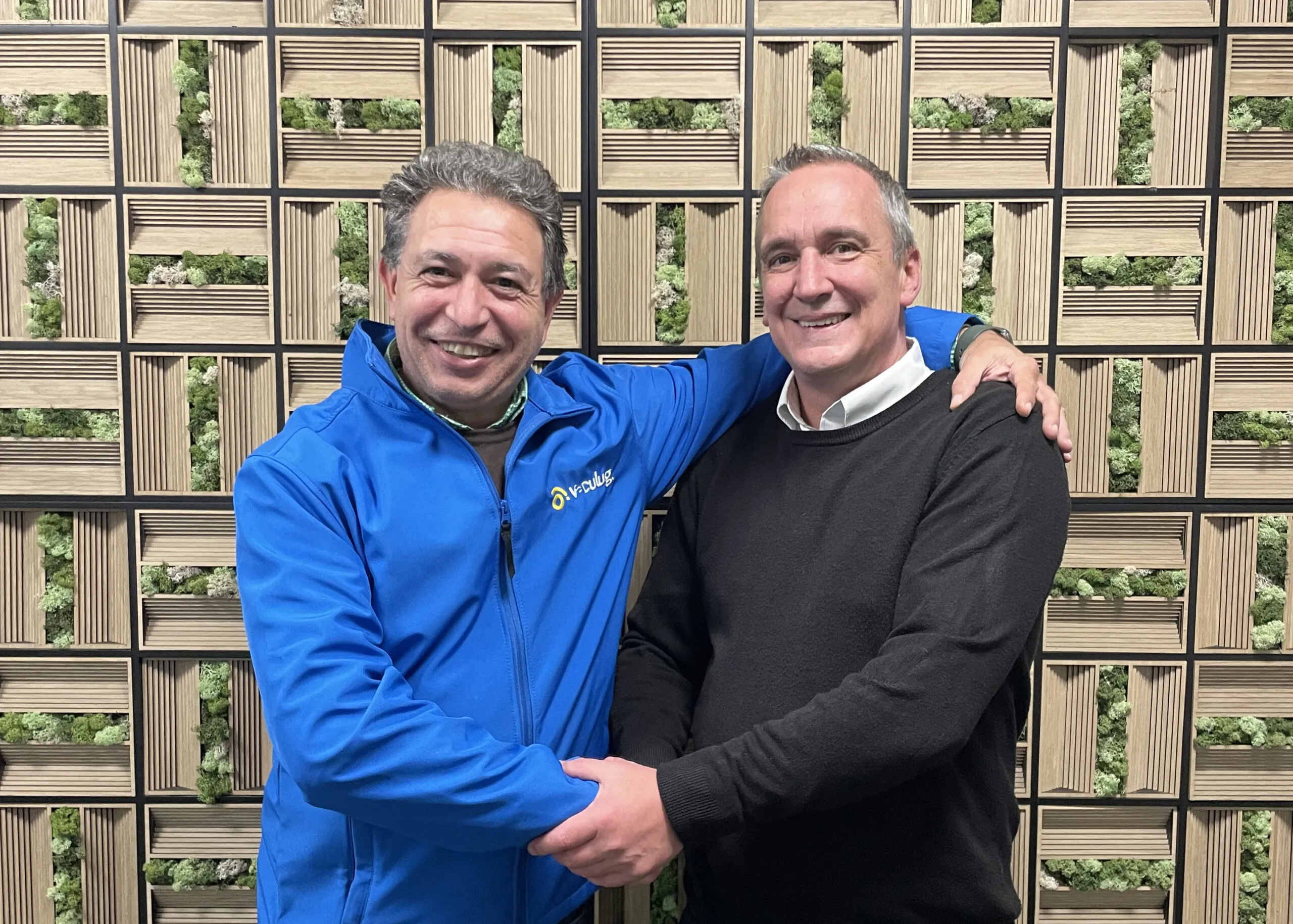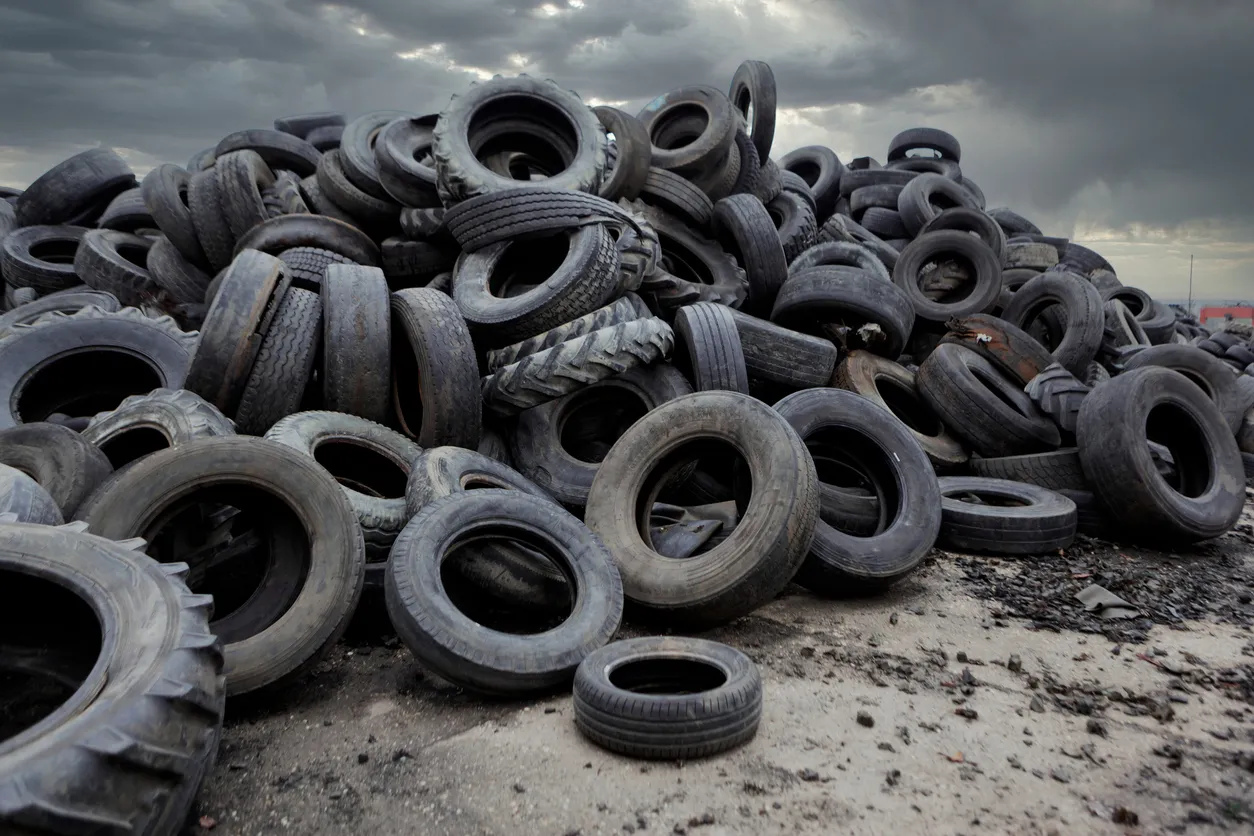The marble quarries in Carrara, Italy, are considered one of the most coveted test areas for tyres in the world.
Kraiburg Demonstrates Success in Extreme Off-Road Conditions
Products that pass the test here can be used all over the globe. Nowhere else are the tyres fitted to overloaded vehicles constantly driving up and downhill and having to cope with tracks consisting of a mixture of marble gravel and marble dust. The result: mechanical damage as well as tearing and cutting. Retreads with KRAIBURG patterns have been in use under these extreme conditions for 15 years, and today the Austria-based retreading materials manufacturer supplies material for around 4,500 tyres, covering more than 80 per cent of the total tyre requirement of the quarry companies. “This success is, on the one hand, thanks to our persistence,” Holger Düx, Sales Manager at KRAIBURG Austria explains. “On the other hand, to the expertise of our retreading partner PR Gomme and their Sales Manager Vincenzo Sbragia. He has been the local contact for providers for the last 39 years and knows their requirements like no other.”
PR Gomme belongs to the Riga-Gomme Group and has had its headquarters in San Marcello Pistoiese in Tuscany since 2001. Producing 26,000 cold and hot retreads for trucks annually, the company is one of the biggest retreaders in Italy with a total of six sales points. The sales team consists of 13 people who look after a total of more than 1,000 active clients. For the last 17 years, one of these has been the family business Carducci Fortunato from Carrara. The family business in the fourth generation is a service provider in the region’s marble quarries. The company was founded when, after the Second Word War, transport of the marble was transferred from rail to road. Today, the company employs 12 people and records an annual turnover of about 1.5 million Euro. “Like Carducci Fortunato, we have known all the tyre dealers in the region as well as the end users and their routes for many years. This essentially sets us apart from our competitors and is the basis for a trusting partnership,” Vincenzo Sbragia relates. “We also score high marks with our service. We deliver and collect tyres twice a week and always respond immediately when there are problems on site.”
PR Gomme’s know-how ultimately also enabled KRAIBURG Austria to optimise the performance of their compounds so that they withstand the harsh conditions in Carrara. KRAIBURG convinced with its reliable handling of complaints, whilst the extreme demands caused many others to fail. However, KRAIBURG always rose to the challenges and finally developed a special compound which is so optimised that, today, KRAIBURG is the sole material supplier for retreads on a large scale. The non-directional pattern K228 is mainly used on the vehicles as well as the K54 in the K_plus version. The tyre size is exclusively 13 R 22.5. The retreads are fitted to the drive axles of four-wheel drive vehicles of all major truck manufacturers. About 200 of these work in the quarries. After climbing from sea level on the narrow, winding roads, first on asphalt, then on gravel tracks, the trucks are loaded. Then they carry their freight back down to sea level, six or seven times a day. In addition to a durable and reliable tyre performance, high-skilled and sensitive drivers are required.
The company Inerti Apuani employs 20 such drivers. The fourth-generation operation is headed by Andrea Della Pina and transports bulk material, rock and gravel, from five different quarries with five of its own vehicles. They have been working well with the service provider Carducci for decades and are delighted that the supplied retreads with the KRAIBURG compound are of at least new tyre standard. These can be driven between 18,000 and 21,000 kilometres depending on the assignment. However, under very extreme conditions, a tyre sometimes has to be changed after 6,000 kilometres. On average, however, the tyres are changed three times a year.
Marble from Carrara has been a household name for centuries, the stone from which the most famous sculptures in the history of art were created and used in the building of cathedrals and palaces. Although marble appears world-wide in a multitude of different variations, in Carrara it is white in its purest form. This makes it unique and the most prominent of its kind. Thousands of slaves of the Roman Empire chiselled the “white gold” out of the rock more than 2,000 years ago. Today, heavy machinery does the groundwork. The marble is cut from the rock wall in blocks weighing up to 60 tons in 150 active quarries. In the past, they needed up to six days, today a maximum of six hours. The blocks are cut on site to the desired size. In former times, these were transported down to the valley on a kind of wooden sledge or by rail. Today, 20 families have a transport licence. Their trucks drive on narrow, winding roads with gradients of more than 30 per cent up to an altitude of 800 to 1,200 metres above sea level, pick up their load and transport it down to sea level for further processing. “Perfectly functioning brake systems and stress-resistant tyres are a life insurance for the drivers under such conditions,” Holger Düx sums up. “We are pleased and a little proud to have defied all the initial difficulties so that the quality material manufacturer KRAIBURG has been bringing this performance continuously for many years.”








